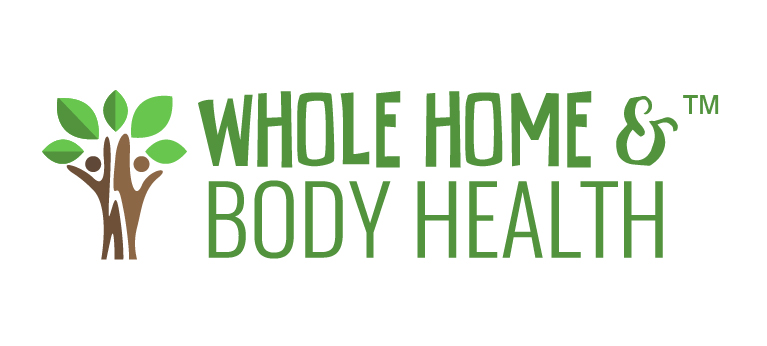When I ask people this question, most people say ‘It depends on where you live’, and there is some truth to that- say if you live in Beijing, China. But as a general rule, the air outside is always cleaner than the air inside your home. I know that’s a sad thing, but it’s those modern conveniences that are changing our air quality. Think about it, the air inside your home comes from the outside, so starting at ground zero, the air inside and outside is the same. But then you’re closing your windows, so you trap the outside air in, and then, you have all of the chemicals that are off-gassing from your home mixed in with this air, with no way out. So even if you do live in Beijing, if your home includes any of the following: carpet, plywood, pressed board, glues in cabinets or furniture, synthetic materials like curtains and bedding, foam in couches and chairs, varnishes, plastics, toxic cleaning supplies, electronics of any kind…you get the idea…then you have the particulates in the outside air inside your house, PLUS all those chemicals from your furnishings and building materials.
You may think that there’s some kind of safety standard on the use of chemicals in products made or purchased in your country. You’d be wrong, especially if you live in the US. Instead of utilizing the precautionary principle, the US regulating agencies put the risk on the consumers. Over 88,000 chemicals have been ‘approved’ for use in the US, with a teeny-tiny percentage of them actually tested for toxicity. So the way it works is this: there has to be an outpouring of public complaints in relation to a certain chemical. If there are enough complaints and public outcry, then a chemical may go under review to assess toxins or health implications. This could take years, and there may or may not be recommendations for reducing the use of the chemical- often times there is not. So the burden is on us, we have to prove that x chemical is causing health problems. And how easy is that? It’s not, so here we are living in a chemical soup.
So what’s a person to do? There are many steps you can take to improve the air quality inside your home. Most of them very simple, though perhaps not easy, given our addictions to convenience and cheap materials. So let’s start with the most effective (and easiest!) thing you can do right now to improve your air quality.
1. OPEN YOUR WINDOWS! That’s right, get some good air ventilation happening in your home right now. This is hand’s down the best thing you can do to help release all those chemicals trapped inside your home. In Building Biology, we like there to be a total air exchange every hour. So- open your windows as much as you can. Some of you might be thinking ‘Oh but the pollen and allergies! That will kill me!’, and if that’s the case- please call me for a health consultation because we can fix that.
Ok so what if you live in Alaska, or worse, Minnesota? It’s cold, I know. Don’t be afraid of the cold. One of the worst things you can do for your health is to be at a comfortable 74 degrees 24/7. You’re body thrives on change, and heat and cold exposure are incredibly healthy (and important!) to the body. Dr. Rhonda Patrick has some amazing information on the topic of heat exposure if you’d like to learn more: click here. And if you want to know more about cold exposure, click here. It’s ok to be cold for a while, or hot. So stop being a wimp and open those windows!
2. Get rid of those toxic cleaning products. We’ve been scared silly by the chemical industry that WE WILL DIE if we don’t kill 99.9% of all the bacteria in our homes! With all the research on the microbiome in the last decade or so, we should all know by now that bacteria aren’t the real enemy. The state of your immune system is a much more important consideration (among a host of other factors). We don’t need to live in a sterilized environment, in fact, that’s a very dangerous thing to do. We need exposure to bacteria for our bodies to work properly. So don’t be concerned with the killing stuff. Soap and water do just fine.
I know there’s a lot of you that also like those intense cleaning smells, and really want your home to smell ‘fresh’. Well there’s nothing fresh (or healthy), about those strong chemical smells. Instead they can lead to migraines, immune disfunction, mental confusion, liver congestion, etc. If you must have that clean smell- consider using essential oils instead.
And then there’s those of you that will say ‘But the ‘natural’ stuff just doesn’t work as well.’ And here I’d say, you’re not buying a good brand. Try another brand, because I guarantee you, they do work as well. And you know what, good old baking soda and vinegar are super powerful, not to mention cheap.
So for the sake of your overall health in general, throw out the toxic chemical agents you have, and reach for the natural alternatives.
3. If you have the luxury of purchasing new furniture, then do so. I know a lot of us can’t do this, but when it’s an option, you can make a big influence on your air quality. When buying a bed for example, consider the shear amount of chemicals in all the materials: polyester, foam, dyes, particle boards, flame retardants etc. There are many companies that make chemical free beds, and have your health in mind. Here is one of my favorite: White Lotus Home. I own two of their beds, their sheets and many pillows, I love them!
You can also shop for couches, chairs and other non-toxic furniture online, just google it. Another option is to frequent thrift stores, estate sales, garage sales etc. Look for furniture that is made from solid wood, not pressed wood or particle board. Wicker is another good option. These items might be more expensive upfront, which is why second hand is such a good option; plus, they’ll last for centuries, can you say that about your fancy new IKEA desk?
Of course there are many other things you can do to improve your air quality inside your home, but these three tips will drastically improve on your current situation. If you’re concerned about your home or workplace, give us a call and we can do a home assessment for you. Breathe easy and sleep well!


Cathy Cooke, BCHN, BBEC Holistic Nutritionist and Building Biologist is the founder of Whole Home and Body Health which provides EMF Assessments, Mold Testing, and Nutrition and Health Consulting located in Boise, Idaho. Cathy is available for consulting via skype and phone, and is also willing to travel as needed for home assessments. Schedule an appointment today!

